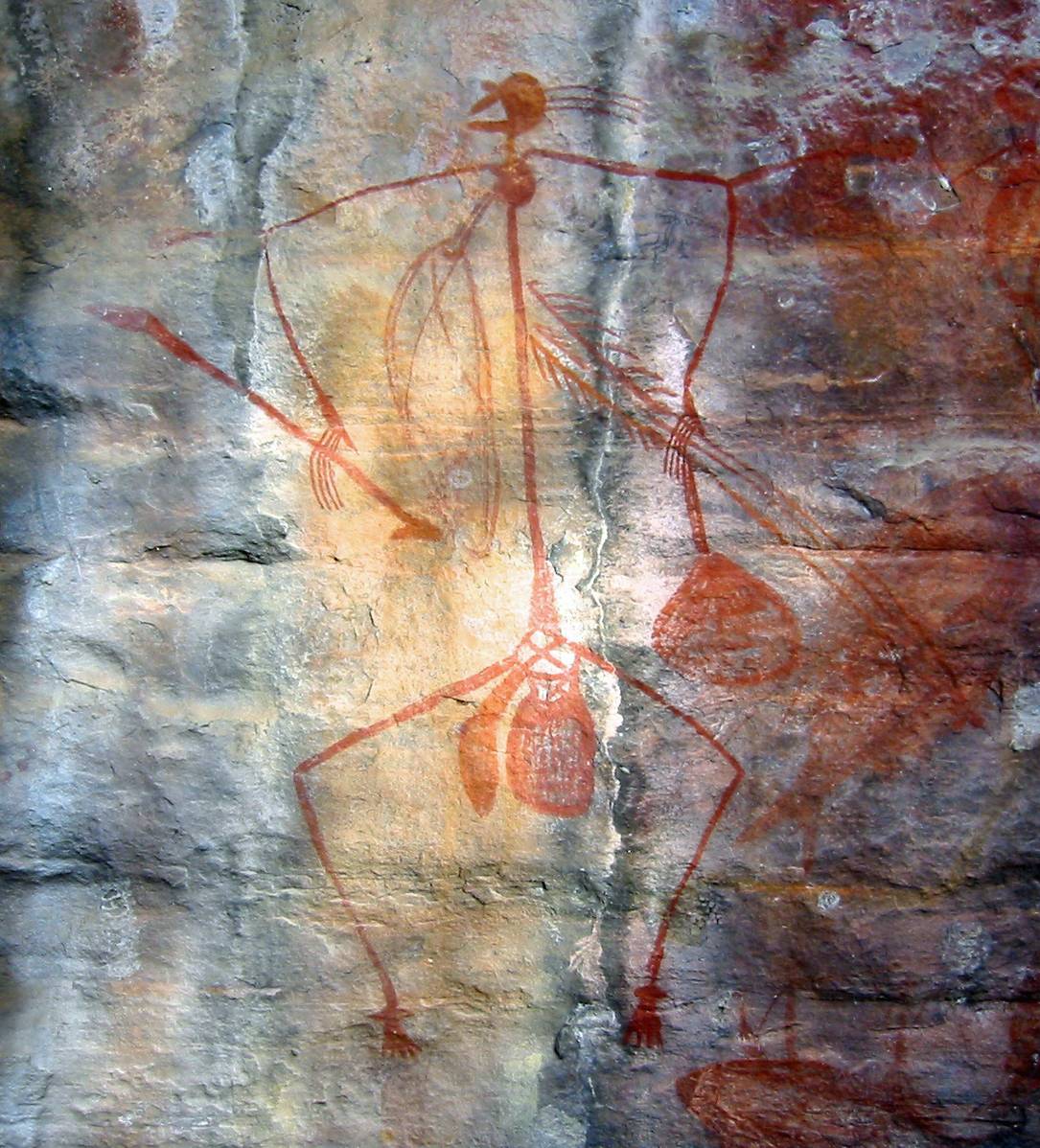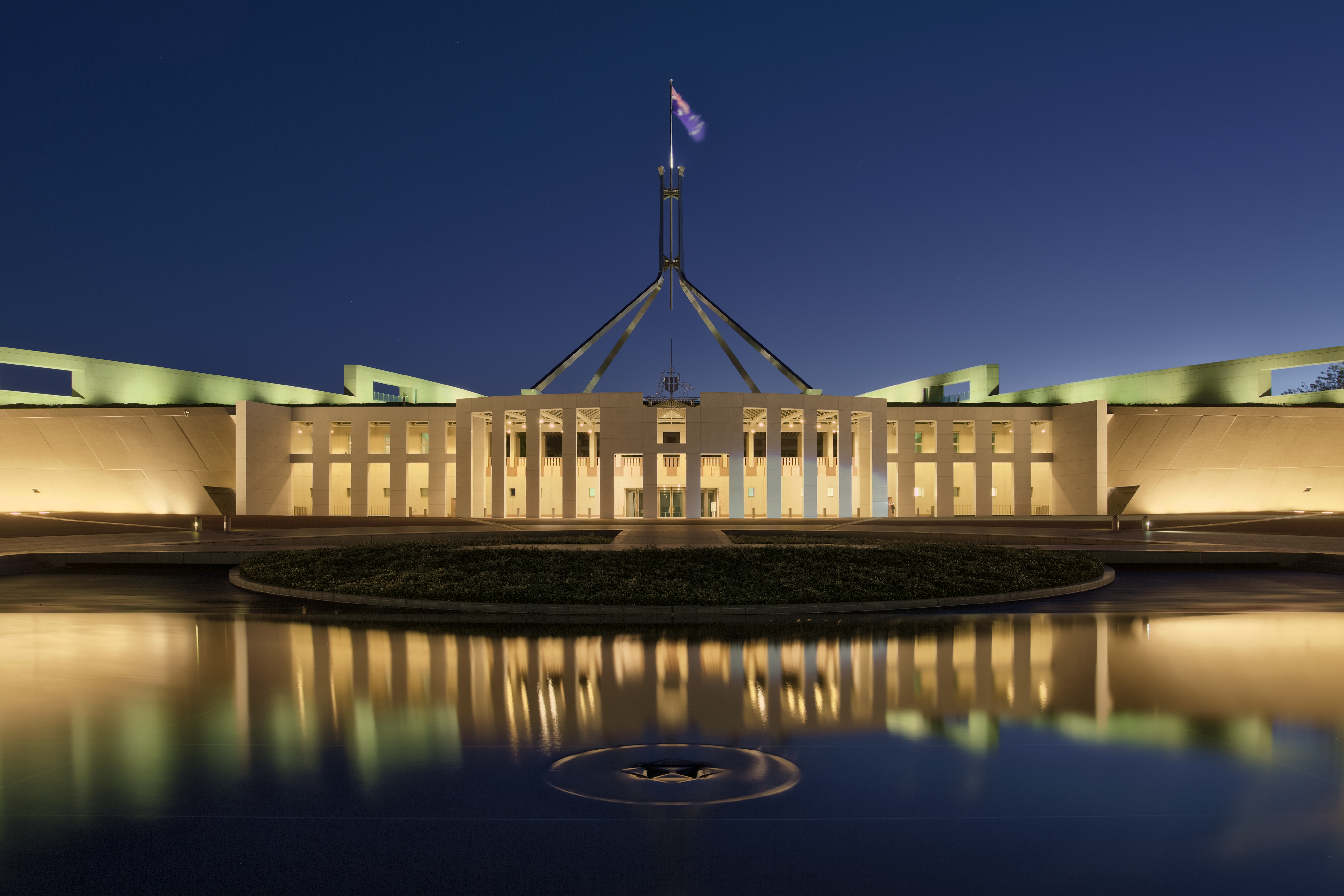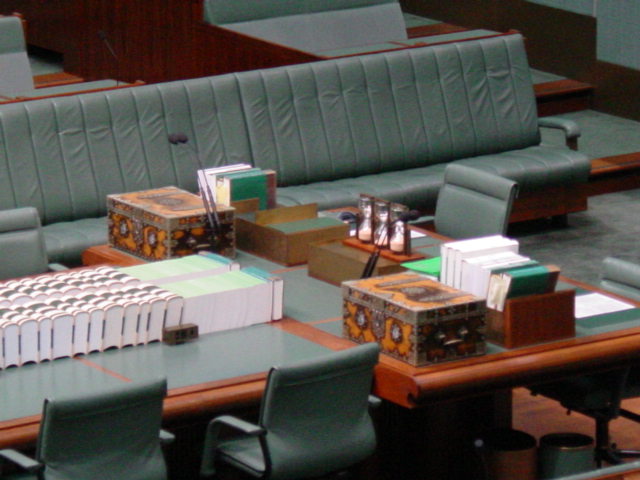|
Australian Referendum, 1967 (Parliament)
The first part of the 1967 Australian referendum to change the Constitution was the Parliament question, which related to the relative number of members in each house of the Australian Parliament − the so-called "nexus". The 1967 Australian referendum called by the Holt Government on 27 May 1967 consisted of two parts, with the second question relating to Aboriginal Australians. Section 24 of the Australian Constitution requires that the number of members in the House of Representatives be, as nearly as possible, twice the number of members in the Senate. Constitution of House of Representatives. The most important effect of the "nexus" in the Australian Constitution is to prevent the dilution of the collective voting power of the Senate, which represents the Australian states equally, in any joint sitting of both houses following a double dissolution election. The nexus ensures that Senators will always have about one-third of the votes in a joint sitting, and Members of ... [...More Info...] [...Related Items...] OR: [Wikipedia] [Google] [Baidu] |
House Of Representatives (Australia)
The House of Representatives is the lower house of the bicameral Parliament of Australia, the upper house being the Senate. Its composition and powers are established in Chapter I of the Constitution of Australia. The term of members of the House of Representatives is a maximum of three years from the date of the first sitting of the House, but on only one occasion since Federation has the maximum term been reached. The House is almost always dissolved earlier, usually alone but sometimes in a double dissolution of both Houses. Elections for members of the House of Representatives are often held in conjunction with those for the Senate. A member of the House may be referred to as a "Member of Parliament" ("MP" or "Member"), while a member of the Senate is usually referred to as a "Senator". The government of the day and by extension the Prime Minister must achieve and maintain the confidence of this House in order to gain and remain in power. The House of Representatives cu ... [...More Info...] [...Related Items...] OR: [Wikipedia] [Google] [Baidu] |
Australian Senate
The Senate is the upper house of the bicameral Parliament of Australia, the lower house being the House of Representatives. The composition and powers of the Senate are established in Chapter I of the Constitution of Australia. There are a total of 76 senators: 12 are elected from each of the six Australian states regardless of population and 2 from each of the two autonomous internal Australian territories (the Australian Capital Territory and the Northern Territory). Senators are popularly elected under the single transferable vote system of proportional representation. Unlike upper houses in other Westminster-style parliamentary systems, the Senate is vested with significant powers, including the capacity to reject all bills, including budget and appropriation bills, initiated by the government in the House of Representatives, making it a distinctive hybrid of British Westminster bicameralism and American-style bicameralism. As a result of proportional representation, t ... [...More Info...] [...Related Items...] OR: [Wikipedia] [Google] [Baidu] |
May 1967 Events In Australia
May is the fifth month of the year in the Julian calendar, Julian and Gregorian calendars and is the third of seven months to have a length of 31 days. May is a month of Spring (season), spring in the Northern Hemisphere, and autumn in the Southern Hemisphere. Therefore, May in the Southern Hemisphere is the seasonal equivalent of November in the Northern Hemisphere and vice versa. Late May typically marks the start of the summer vacation season in the United States (Memorial Day) and Canada (Victoria Day) that ends on Labor Day, the first Monday of September. May (in Latin, ''Maius'') was named for the Greek goddess Maia (mythology), Maia, who was identified with the Roman era goddess of fertility, Bona Dea, whose festival was held in May. Conversely, the Roman poet Ovid provides a second etymology, in which he says that the month of May is named for the ''maiores,'' Latin for "elders," and that the following month (June) is named for the ''iuniores,'' or "young people" (''Fa ... [...More Info...] [...Related Items...] OR: [Wikipedia] [Google] [Baidu] |
Parliamentary Library Of Australia
The Parliamentary Library of Australia (or Commonwealth Parliamentary Library) is the library of the Parliament of Australia, administered by its Department of Parliamentary Services. It provides library services to elected officials, namely members of the Senate and House of Representatives, as well as their staff, parliamentary committees, the Governor-General of Australia, and the staff of parliamentary departments. History The library was established in 1901, the year of the federation of the Commonwealth of Australia. Control of the new library was controversial as the fledgling parliament was located in Melbourne where the Victorian premier and the library committee of the State Library of Victoria sought to influence the control and management of the library. From 1923 the library used two names describing the two roles and two collections ''Commonwealth Parliament Library'' which designated the parliamentary collection and ''Commonwealth National Library'' to designate ... [...More Info...] [...Related Items...] OR: [Wikipedia] [Google] [Baidu] |
History Of Australia
The history of Australia is the story of the land and peoples of the continent of Australia. People first arrived on the Australian mainland by sea from Maritime Southeast Asia between 50,000 and 65,000 years ago, and penetrated to all parts of the continent, from the rainforests in the north, the deserts of the centre, and the sub-Antarctic islands of Tasmania and Bass Strait. The artistic, musical and spiritual traditions they established are among the longest surviving such traditions in human history. The first Torres Strait Islanders – ethnically and culturally distinct from the Aboriginal people – arrived from what is now Papua New Guinea around 2,500 years ago, and settled in the islands of the Torres Strait and the Cape York Peninsula forming the northern tip of the Australian landmass. The first known landing in Australia by Europeans was in 1606 by Dutch navigator Willem Janszoon. Later that year, Spanish explorer Luís Vaz de Torres sailed through, and nav ... [...More Info...] [...Related Items...] OR: [Wikipedia] [Google] [Baidu] |
Politics Of Australia
The politics of Australia take place within the framework of a federal parliamentary constitutional monarchy. Australia has maintained a stable liberal democratic political system under its Constitution, one of the world's oldest, since Federation in 1901. Australia is the world's sixth oldest continuous democracy and largely operates as a two-party system in which voting is compulsory. Australia is also a federation, where power is divided between the federal government and the states and territories. The federal government is separated into three branches: File:Au_gov_chart.svg, center, 640px, Structure of the Government of Australia, alt=A high level diagram of the structure of the Government of Australia, the three branches, legislative, executive, and judicial. rect 575 6 1175 56 Constitution of Australia rect 575 191 1175 241 Governor General of Australia rect 125 341 425 391 Legislative Branch rect 725 341 1025 391 Executive Branch rect 1325 341 1625 391 Jud ... [...More Info...] [...Related Items...] OR: [Wikipedia] [Google] [Baidu] |
Referendums In Australia
Referendums have been held in Australia to approve parliament-proposed changes to the Constitution of Australia or to the constitutions of states and territories. Polls conducted on non-constitutional issues are sometimes but not always referred to as plebiscites. Not all federal referendums have been on constitutional matters (such as the 1916 Australian conscription referendum), and state votes that likewise do not affect the constitution are frequently said to be referendums (such as the 2009 Western Australian daylight saving referendum). Historically, they are used by Australians interchangeably and a plebiscite was considered another name for a referendum. Voting in a referendum is compulsory for those on the electoral roll, in the same way that it is compulsory to vote in a general election. As of 2020, 44 nationwide referendums have been held, only eight of which have been carried. However, there have only been 19 times the Australian people have gone to the polls to vo ... [...More Info...] [...Related Items...] OR: [Wikipedia] [Google] [Baidu] |
Double Dissolution
A double dissolution is a procedure permitted under the Australian Constitution to resolve deadlocks in the bicameral Parliament of Australia between the House of Representatives ( lower house) and the Senate (upper house). A double dissolution is the only circumstance in which the entire Senate can be dissolved. Similar to the United States Congress, but unlike the British Parliament, Australia's two parliamentary houses generally have almost equal legislative power (the Senate may reject outright but cannot amend appropriation (money) bills, which must originate in the House of Representatives). Governments, which are formed in the House of Representatives, can be frustrated by a Senate determined to reject their legislation. If the conditions (called a trigger) are satisfied, the prime minister can advise the governor-general to dissolve both houses of Parliament and call a full election. If, after the election, the legislation that triggered the double dissolution is st ... [...More Info...] [...Related Items...] OR: [Wikipedia] [Google] [Baidu] |
Joint Session
A joint session or joint convention is, most broadly, when two normally separate decision-making groups meet, often in a special session or other extraordinary meeting, for a specific purpose. Most often it refers to when both houses of a bicameral legislature sit together. A joint session typically occurs to receive foreign or domestic diplomats or leaders, or to allow both houses to consider bills together. Some constitutions give special power to a joint session, voting by majority of all members of the legislature regardless of which house or chamber they belong to. For example, in Switzerland a joint session of the two houses elects the members of the Federal Council (cabinet). In India, disputes between houses are resolved by a joint sitting but without an intervening election. Australia In the Australian federal parliament, a joint sitting can be held, under certain conditions, to overcome a deadlock between the two houses. For a deadlock to be declared, a bill has to be ... [...More Info...] [...Related Items...] OR: [Wikipedia] [Google] [Baidu] |
Australian House Of Representatives
The House of Representatives is the lower house of the bicameral Parliament of Australia, the upper house being the Senate. Its composition and powers are established in Chapter I of the Constitution of Australia. The term of members of the House of Representatives is a maximum of three years from the date of the first sitting of the House, but on only one occasion since Federation has the maximum term been reached. The House is almost always dissolved earlier, usually alone but sometimes in a double dissolution of both Houses. Elections for members of the House of Representatives are often held in conjunction with those for the Senate. A member of the House may be referred to as a "Member of Parliament" ("MP" or "Member"), while a member of the Senate is usually referred to as a "Senator". The government of the day and by extension the Prime Minister must achieve and maintain the confidence of this House in order to gain and remain in power. The House of Representat ... [...More Info...] [...Related Items...] OR: [Wikipedia] [Google] [Baidu] |
Indigenous Australians
Indigenous Australians or Australian First Nations are people with familial heritage from, and membership in, the ethnic groups that lived in Australia before British colonisation. They consist of two distinct groups: the Aboriginal peoples of the Australian mainland and Tasmania, and the Torres Strait Islander peoples from the seas between Queensland and Papua New Guinea. The term Aboriginal and Torres Strait Islander peoples or the person's specific cultural group, is often preferred, though the terms First Nations of Australia, First Peoples of Australia and First Australians are also increasingly common; 812,728 people self-identified as being of Aboriginal and/or Torres Strait Islander origin in the 2021 Australian Census, representing 3.2% of the total population of Australia. Of these indigenous Australians, 91.4% identified as Aboriginal; 4.2% identified as Torres Strait Islander; while 4.4% identified with both groups. [...More Info...] [...Related Items...] OR: [Wikipedia] [Google] [Baidu] |
Section 24 Of The Australian Constitution
Section 24 of the Constitution of Australia is titled "Constitution of House of Representatives". It provides that the House of Representatives be "directly chosen by the people of the Commonwealth" and have twice as many seats as the Senate. It also provides a formula for the number of seats in each state, subject to later amendment by the parliament, and guarantees at least five members for each original state. Text The House of Representatives shall be composed of members directly chosen by the people of the Commonwealth, and the number of such members shall be, as nearly as practicable, twice the number of the senators. The number of members chosen in the several States shall be in proportion to the respective numbers of their people, and shall, until the Parliament otherwise provides, be determined, whenever necessary, in the following manner: (i) a quota shall be ascertained by dividing the number of the people of the Commonwealth, as shown by the latest statistics of the ... [...More Info...] [...Related Items...] OR: [Wikipedia] [Google] [Baidu] |






